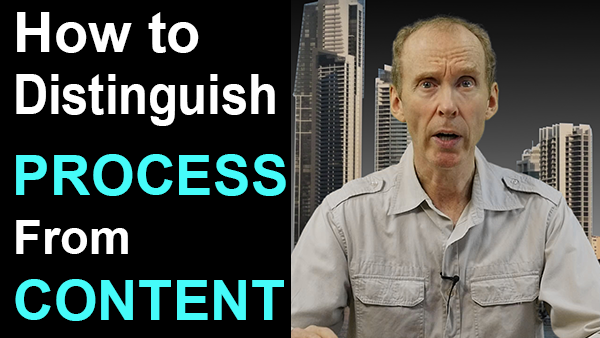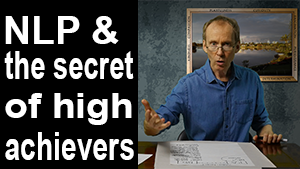
Phone 07 5562 5718 or send Abby an email to book a free 20 minute telephone or Skype session. Smoking cigarettes and marijuana - drinking too much alcohol - gambling - and binge eating may look quite different yet in terms of process they are similar. Being able to differentiate process from content - that is how the person does the addictive behaviour from what they actually do means that you can achieve rapid long lasting results using NLP and Hypnotherapy. Gold Coast, Robina, addiction treatment clinic.
Click the Image to Watch on YouTube
Get Rapid Long Lasting Change With Addictive Behaviour by Separating Process From Content Using NLP and Hypnotherapy
By Abby Eagle (2016)
For those of you who have watched a number of my youtube videos you would see that I encourage you to challenge everything for the truth. A large part of that process is learning how to recognise patterns. And part of pattern recognition is the ability to differentiate between process and content.
On the Peace Mapping page on my website I use global warming as an example of where people may hold contrasting opinions. Now just the mere fact that I mentioned global warming meant that I lost credibility with one person – who emailed me to say that he stopped reading the article as soon as he saw the words, “global warming”.
What he did was read some key words and hook into the content which meant that he missed the process that I was attempting to explicate. Just the mere mention of some key words and you will find that some people will immediately hook into the content. At that point they have such a strong bias that it can make it virtually impossible for them to consider anything but what they believe to be true.
So let’s take a look at process versus content.
Making a cup of tea is a process. The type of tea is the content. The way the tea is prepared and delivered to the person is also part of the process. Buying a cup of tea in a paper cup from a drive through fast food franchise is quite a different process to being served tea at a Japanese tea room.
An argument is a process. What the people say is the content. How they express those words; that is volume, tonality and tempo is part of the process. If you change the volume, tonality and tempo then you change the meaning. The words, the content have remained the same but the meaning is different. In terms of brain science the left brain hears the words that are spoken. The right brain hears how they are spoken.
Physical exercise is a process. What the person does is the content.
Smoking is a process. What the person smokes is the content. Those people who treat smoking in terms of content will find it difficult to stop the habit but once you treat it as a process it becomes much easier.
Now these examples are fairly simple but as soon as we bring up topics like politics, religion and domestic violence then it can be difficult not to hook into the content. In terms of religion and spirituality what people believe and do may differ greatly between religions yet you will find similarity in process.
Sometimes the content is more important than the process. Sometimes the process is more important than the content. But what is always required is the ability to distinguish process from content and recognise the pattern. Sometimes the words that are spoken are important – sometimes how the words are spoken are important.
I sometimes think that politicians should have to write out an election speech and we the voter should have to read the speech and make our decision on who to vote for based upon the written word rather than the spoken word. And yet having said that, an image can tell a thousand words.
Now neuroscientists have come up with some fascinating experiments. In this experiment, they take a list of words. Red, green, orange, yellow, blue and pink. The words are coloured the same as the word. You have to read the list of words quickly. Okay do that now.
They then change the colours of the words and you have to quickly name the colour of each word. So quickly say the name of each colour. How did you go?
To recognise the word and say it requires use of the left brain. To recognise the colour and say the colour requires use of the right brain. It used to be thought that being right brain dominant was better but now the understanding is that we need whole brain thinking so that we can shift with ease from one brain hemisphere to the other.
Sometimes we get stuck in one type of thinking because of the type of work that we do but peripheral sensing gives us a way to practise shifting from the left hemisphere to the right and back again.
So this is how you do peripheral sensing. What I would like you to do is find a spot in front of you. Don’t concentrate on the spot just let it be a gentle gaze in that direction. And as you gaze in the direction of that spot I would like you to notice that you can see all the way out to one side and all the way out to the other. That is, your eyes keep looking at the spot but you can see what is in your peripheral vision.
In peripheral vision the two main distinctions that you will notice are movement and shadows. Objects also tend to lose their names and become objects and shapes. Colours tend to lose their names and just become colours. There are textures, reflections and shininess and you might be wondering about some of those things.
And as you keep gazing in the direction of that spot and exploring your peripheral vision I would like you to notice the sounds that are around you. Just notice the sounds that may be close and the sounds that may be far away.
The interesting thing about sounds is that they arise out of silence and disappear into silence. Silence is always there in the background. Sounds are in the foreground. Your internal dialogue is in the foreground while the silence is in the background. To experience the silence all you need do is bring your consciousness to the silence.
As you keep gazing in the direction of that spot and exploring your peripheral vision and the sounds that are around you I would like you to bring your awareness back to your body. Notice the waiting of your feet, the placement of your hands, the breathing in the body. Bring your awareness to the back of the body because in the same way that you have a front to your body you have a back to your body. In the same way that you have a front to your mind you have a back to your mind. In the same way that you have a conscious mind you have an unconscious mind. And the unconscious mind can be considered like a silent partner that is always with you and will do anything that you ask as long as you ask in the right manner.
So now look at the palm of your hand. Notice that you can focus in on the palm of the hand yet simultaneously maintain awareness of the periphery. This is focussed peripheral vision. Now at times you may need to focus on what is directly in front of you and forget about the periphery but what is important is that you have the flexibility to track your consciousness so that you can differentiate process from content.
So content is a noun. Process is a verb. A tree is a noun. A noun is static – it does not move. But a tree is actually not static. It is always in the process of doing something. If the tree is alive it is in the process of a myriad of biological processes. Even when a tree is dead it is still in the process of decay. So the noun, “tree” should really be the verb, “treeing”. So going back to the example of making a cup of tea. The process of making a cup of tea actually involves a whole series of sub processes. And if we were to look at a singular event in the world today we would find that in fact the event – a noun – is not a noun but a small bit in a series of interrelated processes that can connect you into many different aspects of history.
If you want to improve your communication skills; if you want to make a difference in the world then the first step is to learn how to differentiate process from content. The second step is to be able to show others how to differentiate process from content while in a conversation. And that is where I think it becomes challenging.
So what I did for myself was to create the NLP Peace Mapping Model. It is a compilation of NLP models that I keep in the back of my mind to help me track a conversation. Follow this link to learn more.
Share With Friends










